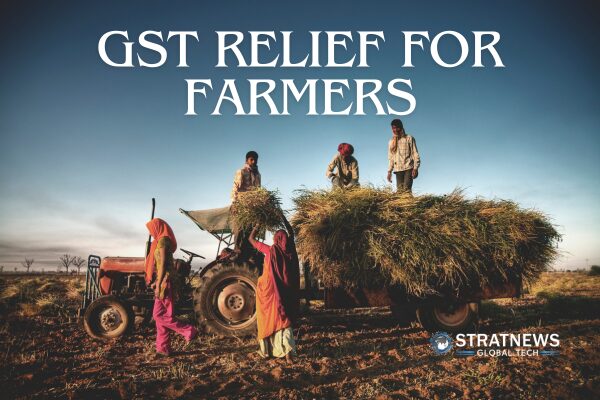New GST Rates to Boost Profits for Farmers, Says Agriculture Minister
Union Agriculture and Rural Development Minister Shri Shivraj Singh Chouhan has stated that the new GST slabs will significantly benefit farmers, especially those operating on small and medium scales. Speaking at a press conference in Bhopal on 6 September 2025, he emphasised that the revised GST rates will reduce input costs, enhance profits, and promote sustainable farming.
The Minister highlighted that GST on agricultural equipment has been reduced from 18% to 5%. This change, he said, would act as a “boon” for farmers by making essential machinery more affordable.
Cheaper Equipment Brings Big Savings
Farmers will now save thousands of rupees on various farm machines. For example:
A 35 HP tractor now costs around ₹6.09 lakh, saving ₹41,000.
A 45 HP tractor saves ₹45,000.
A 75 HP tractor sees a price drop of ₹63,000.
A 50 HP tractor is cheaper by ₹53,000.
A power tiller (13 HP) sees savings of ₹11,875.
Paddy planting machines and multi-crop threshers are cheaper by over ₹14,000.
Other machines like seed drills, power weeders, happy seeders, and mulchers also reflect significant savings.
These reductions make modern equipment more accessible, particularly for farmers with smaller landholdings.
Support for Allied Sectors and Women’s Groups
Shri Chouhan also stressed the importance of integrated farming. With GST reductions now covering animal husbandry, poultry, fish farming, and agro-forestry, farmers engaged in allied sectors will also benefit. The exemption on GST for milk and cheese, and reduced GST on butter, ghee, and milk cans, will aid both farmers and consumers while boosting the dairy sector.
He noted that these changes will especially help women-led self-help groups involved in food processing and handicrafts. The ‘Lakhpati Didi’ initiative, aimed at empowering rural women, is expected to gain momentum as incomes increase.
Promoting Organic and Sustainable Farming
GST reductions now apply to 12 biological pesticides and micronutrients. Shri Chouhan said this would lower costs for organic and natural farming inputs, encouraging farmers to shift away from chemical-based farming. Raw materials used in fertiliser production, such as ammonia and sulphuric acid, have also seen GST drop from 18% to 5%.
Furthermore, energy-efficient and research-based agricultural equipment, including those used in drip irrigation, are now cheaper. This will not only reduce water usage but also raise agricultural productivity.
Impact Beyond Farming
The revised GST rates will also benefit rural infrastructure. With lower GST on cement and iron, construction under schemes like the Pradhan Mantri Awas Yojana will become more affordable. Schools, Anganwadis, and Panchayat Bhawans in villages will see reduced construction costs.
Additionally, processed and preserved fruits, vegetables, and fish now attract lower GST, aiding both food processors and primary producers. Honey and related natural products are also covered under the revised GST slabs.
Strengthening Rural Economy and Aatmanirbhar Bharat
The Minister concluded by thanking Prime Minister Narendra Modi and the Finance Minister for the “revolutionary reforms.” He said these GST revisions support the goals of Aatmanirbhar Bharat and Viksit Bharat 2047 by strengthening the rural economy, increasing market liquidity, and creating long-term value for farmers.


